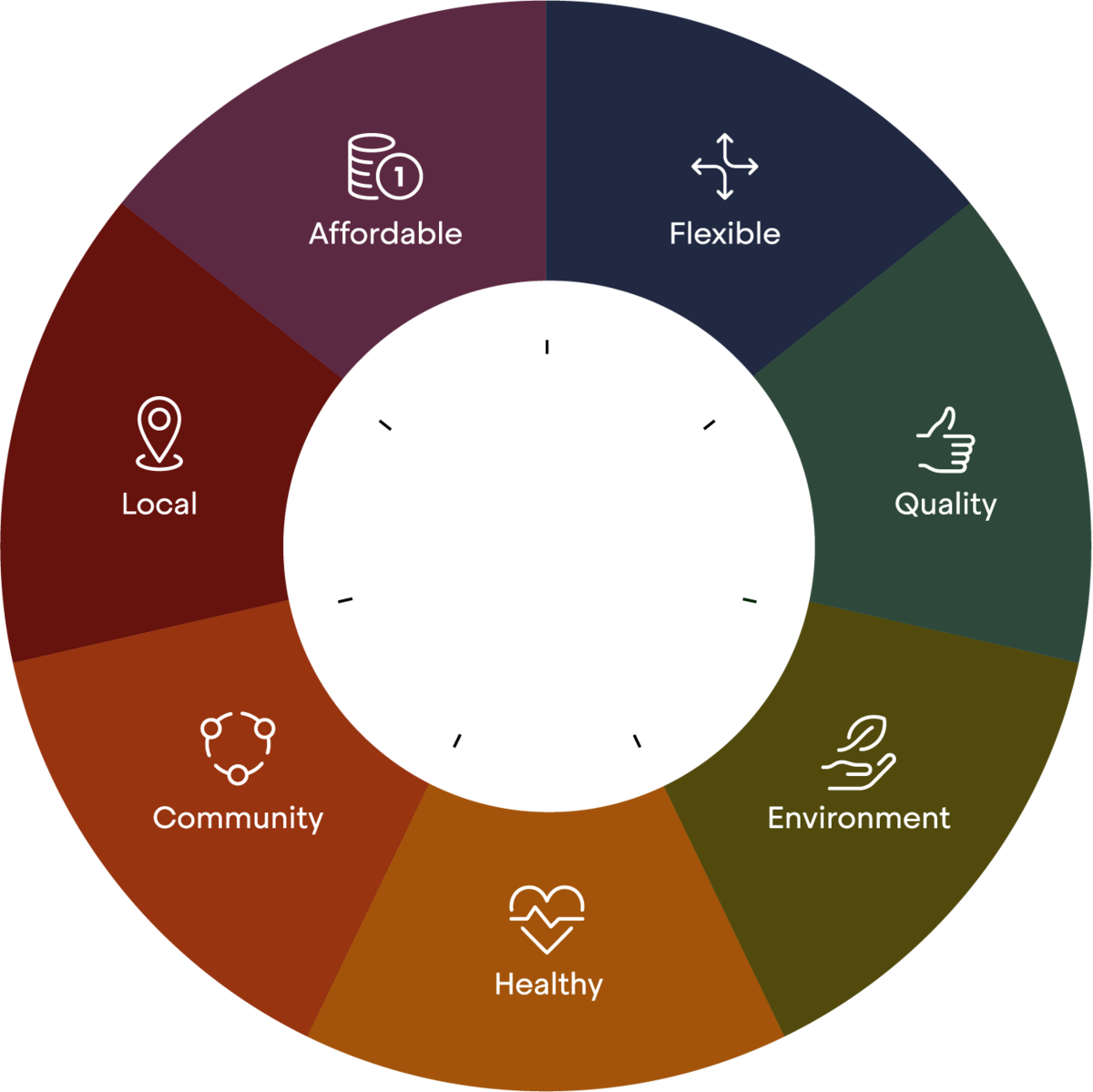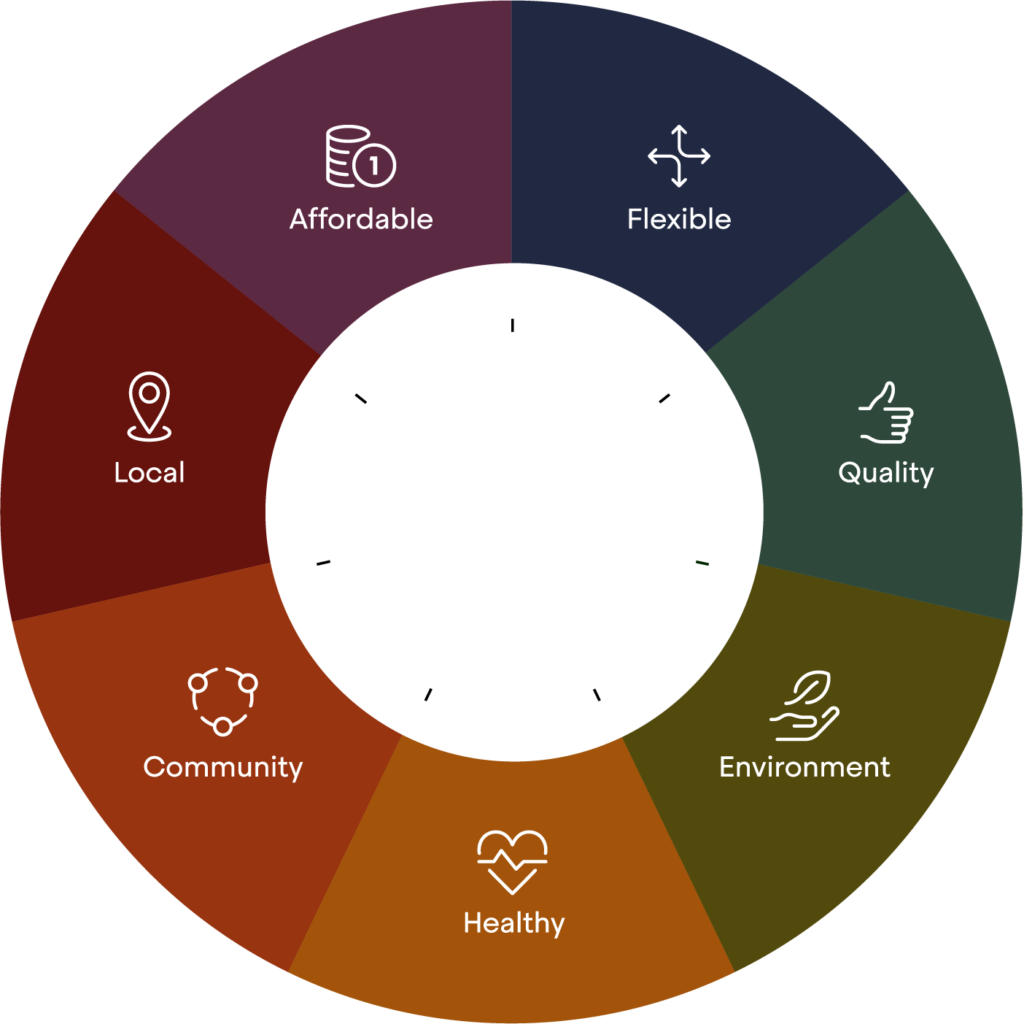
How can good building design improve people’s well-being and benefit the planet? First and foremost, our approach to new and existing living spaces needs to change.
When it comes to the built environment, we’re seeing a greater push for the consideration of both people and planet – however, the building industry experiences multiple challenges in trying to address them.
So how can we live in a more sustainable, connected and healthy manner? This is one of several fundamental questions addressed in the Build for Life concept, developed by VELUX – a concept that is rooted in a strong commitment to show how it is possible to build sustainably and enable happier and healthier living places.
Taking its +18 years of best practices in sustainable buildings to a new level, the VELUX Group’s sustainable buildings and communities platform Build for Life addresses these challenges and acknowledges that the way we build today has an enormous impact on people, as well as the ecosystems that sustain us. The concept provides a compass for designers, city planners and building professionals – acting as a blueprint – along with suggestions for ways to address some of the most pressing social dilemmas we face, such as health, affordability and community.

Health
We spend up to 90% of our time indoors but fail to create a healthy indoor climate, due to the application of a one-size-fits-all approach in our building designs and compromising on the quality of construction materials. By designing buildings using healthy indoor principles and materials, we can create buildings that don’t just make you less sick but also improve your health. Our commitment to the highest-quality materials also means our products last for generations – which leads to less consumption.
Affordability
An additional 2.5 billion people are expected to live in cities by 2050. At the same time, most cities across the globe have seen a substantial and steady increase in housing prices, making our built environment unaffordable for the people who would benefit from them the most. By designing a built environment that focuses on affordability through design, shared living, and new business cases we could unlock housing for the people that will benefit from it the most.
Community
The social dimensions are a huge component of the Build for Life concept, as despite living closer together and being more connected than ever, people feel more lonely, anxious and stressed than ever before. By designing a built environment that encourages a community to develop, through sharing, participation, identity and safety, we could increase wellbeing and improve overall health whilst reducing anxiety, loneliness and stress.
The Build for Life concept is outlined in a Compass Model, detailing seven strategic drivers – flexibility, quality, environment, health, community, local, affordability – to guide the building and development process. These drivers enable collaborators across sectors to follow an easy, open-source framework for developing and transforming buildings for the future; it is only by working together across the industry that we’ll be able to achieve healthier and more sustainable living places for all.
“Homes and communities should be centred around healthy and regenerative design principles to be designed for both people and planet. Build for Life is more than a design concept, it is a way of thinking and living” explains Lone Feifer, Director of Sustainable Buildings, the VELUX Group.
At VELUX, we started our journey with sustainable living in buildings in 1999 and since then have founded a global alliance, partnered in demonstration projects around the world and driven research that puts the spotlight on the need for building renovation solutions to address societal and environmental issues.

Environment
Every action we take comes back to our pledge to become Lifetime Carbon Neutral by 2041, and our products are designed with health and well-being in mind, something that is more relevant than ever in the light of the pandemic and in our support of the UN’s 2030 third SDG ‘good health and well-being’ in buildings.
The VELUX Group has set science-based targets to contribute to limiting global temperature increases to 1.50c and avoid the worst impacts of climate change. This includes a commitment to reduce emissions from the Group’s own operations to zero (scope 1 and 2) and halve value chain emissions by 2030. The VELUX Group has also committed to go above and beyond its value chain, and capture its historical carbon footprint since the business was founded in 1941 (approx. 5.6 million tons of CO2, including a 25% buffer) in 5 climate and biodiversity projects around the world.
We seek to inspire not only our customers but also the entire building industry to create buildings with good indoor climates, efficient energy consumption and a minimal environmental impact.
For more information about Build for Life, visit velux.com
